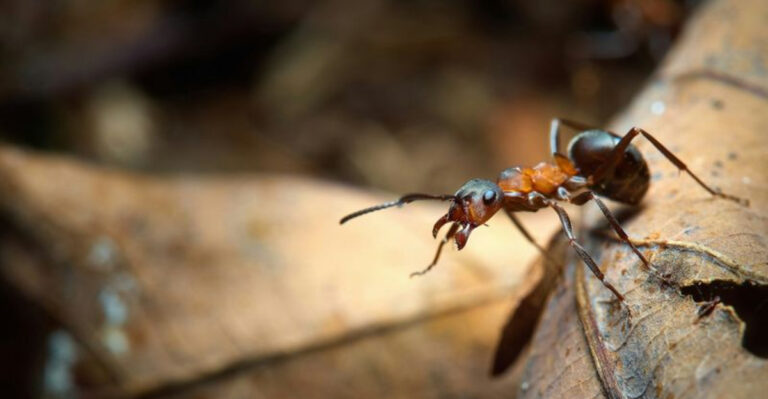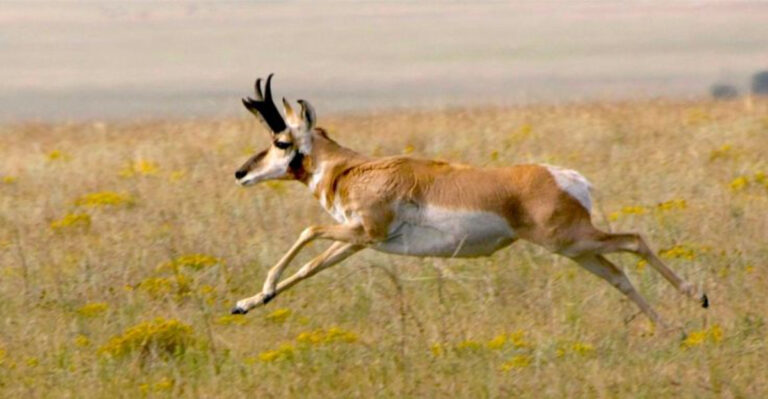23 Vibrant Frogs And Amphibians That Bring Color To The Wild
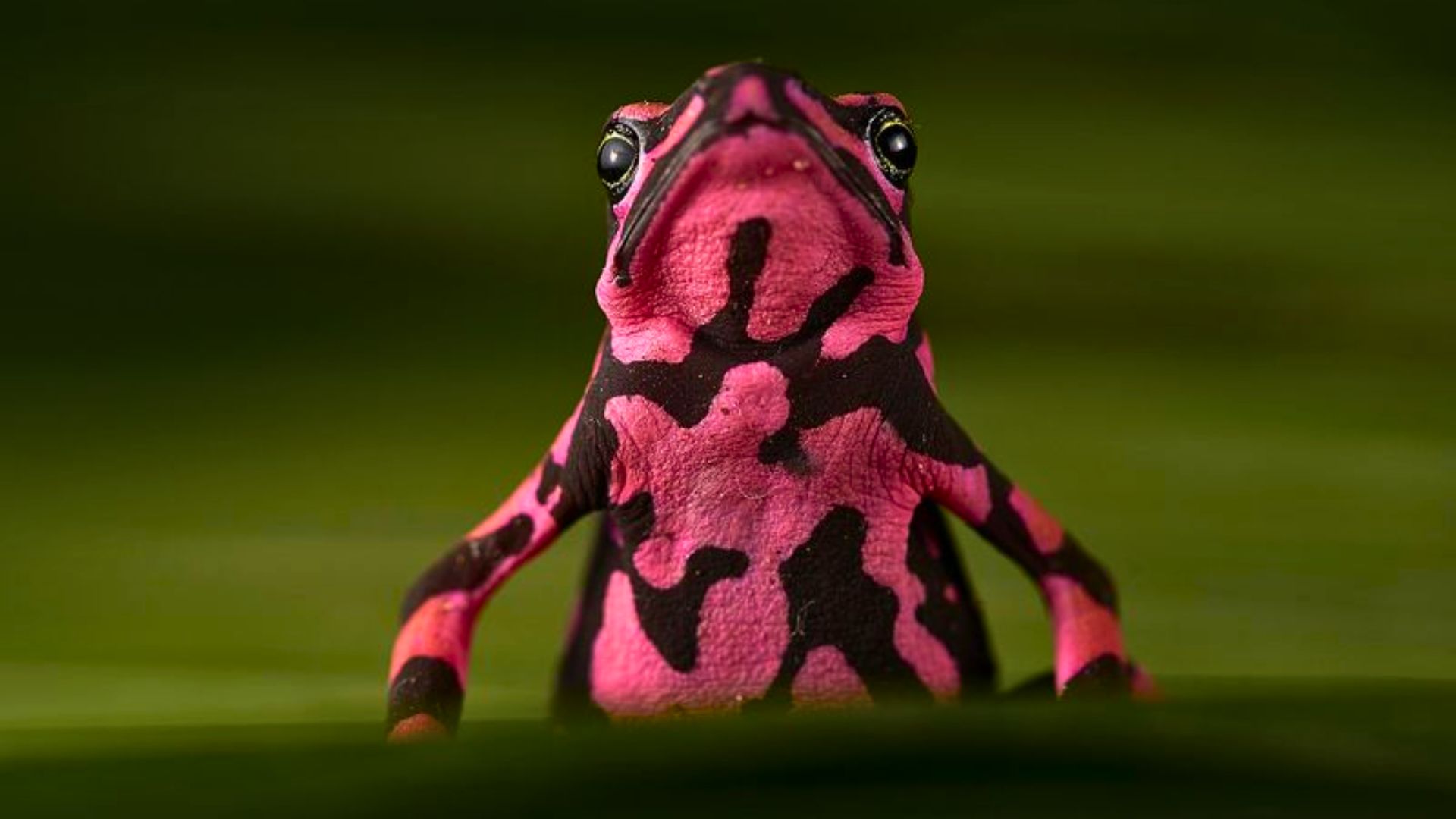
The natural world is full of color, but few creatures showcase it quite like frogs and amphibians. Their vibrant hues do more than just catch the eye—they play vital roles in survival, communication, and defense.
From glowing blues to fiery reds, these 23 frogs and amphibians brighten up their wild habitats with stunning patterns and shades.
Join us as we explore these colorful champions of the wild and uncover the fascinating stories behind their brilliant appearances.
1. Strawberry Poison Dart Frog
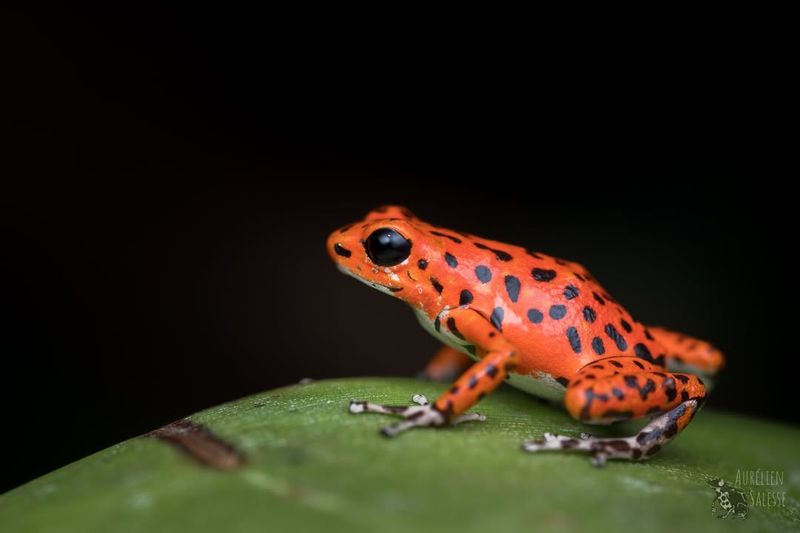
This tiny yet striking frog, native to Central America, is a beacon of bright red with distinctive blue legs. Often found clinging to leaves in the rainforest, its vibrant coloration serves as a warning to predators about its potent toxicity.
Despite its small size, the Strawberry Poison Dart Frog plays a crucial role in its ecosystem, particularly in controlling insect populations. Its bold appearance is not just for show—these frogs are highly territorial and communicate with various calls.
Their colors can even vary slightly from one region to another, making each encounter unique. Observing them requires careful attention as they blend into the rich tapestry of rainforest flora.
2. Blue Poison Dart Frog
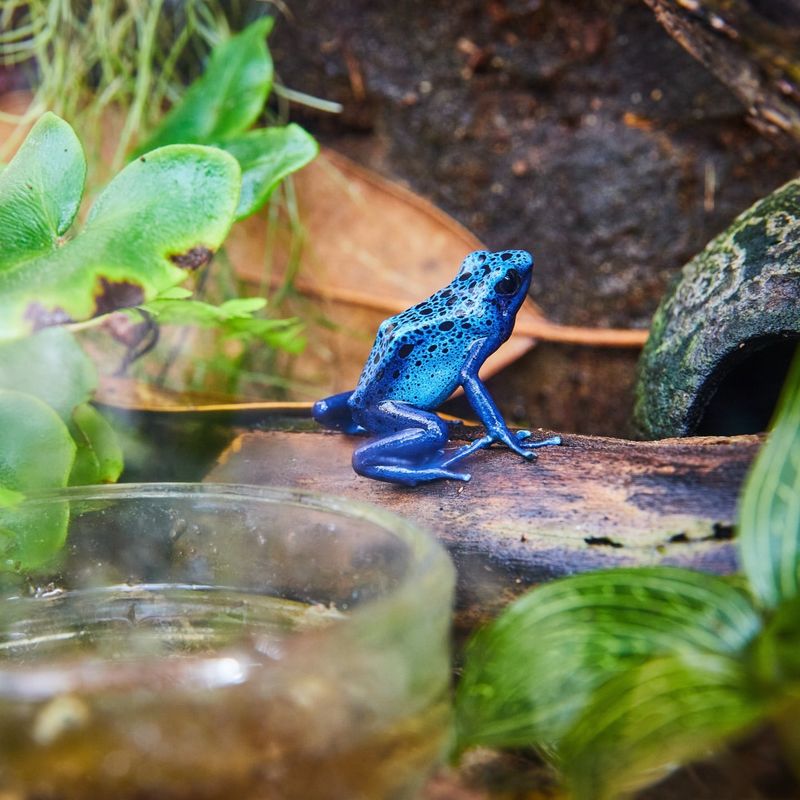
Known for their brilliant azure coloration, Blue Poison Dart Frogs are native to the forests of Suriname. Their skin, adorned with patches of black, acts as a stark warning against potential predators.
Unlike many amphibians, these frogs are active during the day, making their vivid hues even more noticeable. They thrive in humid conditions, often inhabiting areas near streams or ponds.
The toxicity of their skin has a fascinating origin; it is derived from their diet of ants and other small insects in the wild. Conservation efforts are crucial for these frogs as habitat destruction poses a significant threat to their survival in the wild.
3. Red-Eyed Tree Frog
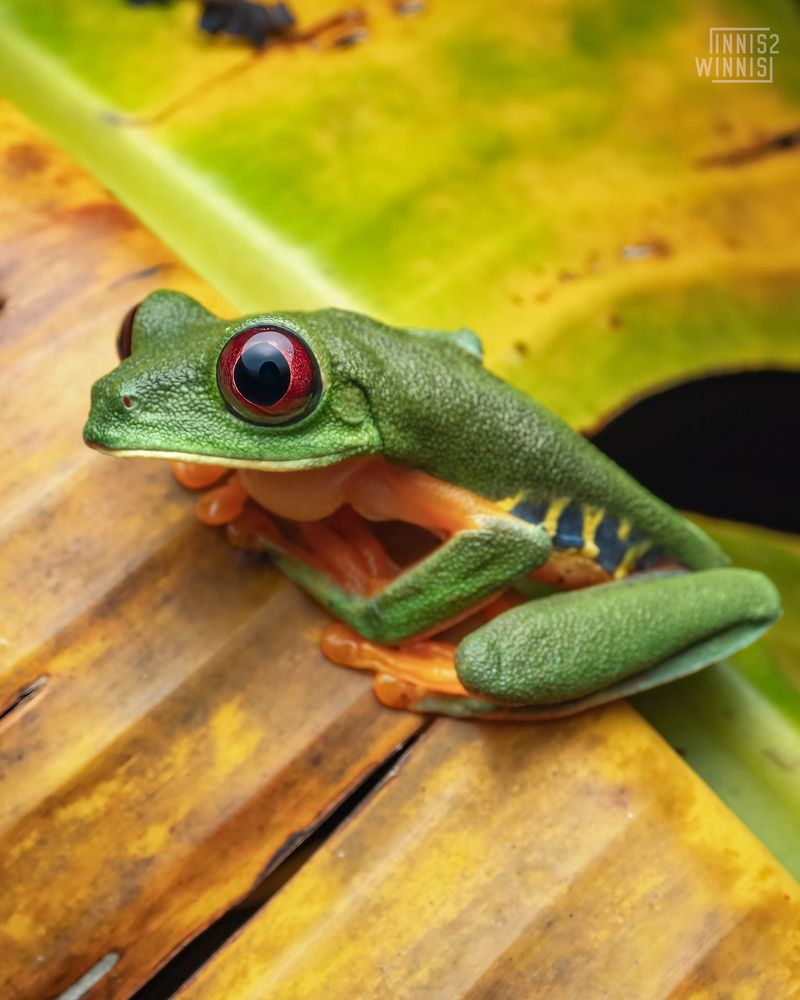
The Red-Eyed Tree Frog, with its iconic red eyes and vivid green body, is a symbol of the Costa Rican rainforest. These eyes are not just for show—they serve as a defense mechanism by startling predators when opened suddenly.
During the day, they stay motionless, camouflaged among the leaves. At night, they become active hunters, moving gracefully from branch to branch.
Their suction cup-tipped toes allow them to cling effortlessly to foliage. These frogs play a vital role in the ecosystem by keeping insect populations in check, showcasing the intricate balance of nature.
4. Golden Mantella
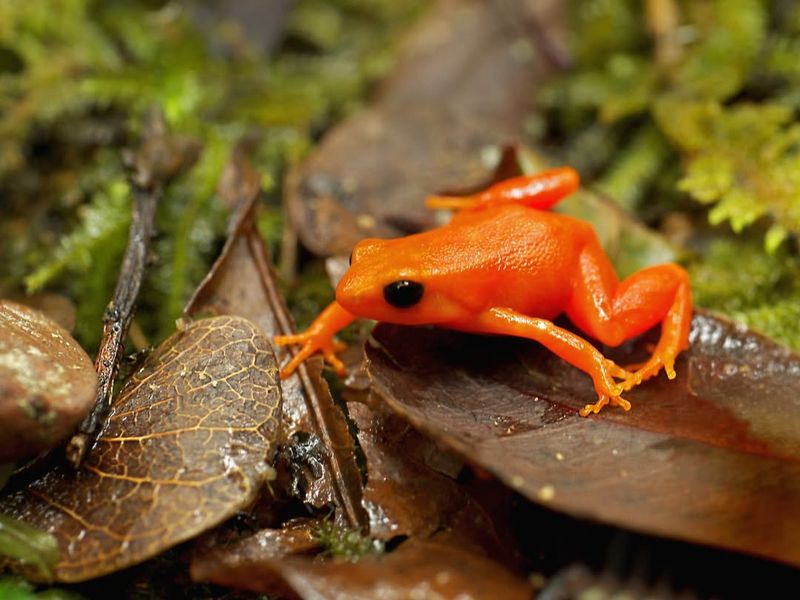
Endemic to Madagascar, the Golden Mantella is renowned for its brilliant orange-yellow skin. This vibrant hue is a classic example of aposematic coloration, a natural warning to potential predators of the frog’s toxicity.
Living in small groups, these frogs are often found near marshes and swamps, where they breed in the rainy season. Conservation efforts are vital for their survival, as habitat loss poses a significant risk.
These frogs have become ambassadors for amphibian conservation, highlighting the biodiversity of Madagascar’s unique ecosystems. Observing them in their natural habitat is a reminder of the delicate beauty and complexity of life.
5. Green And Black Poison Dart Frog
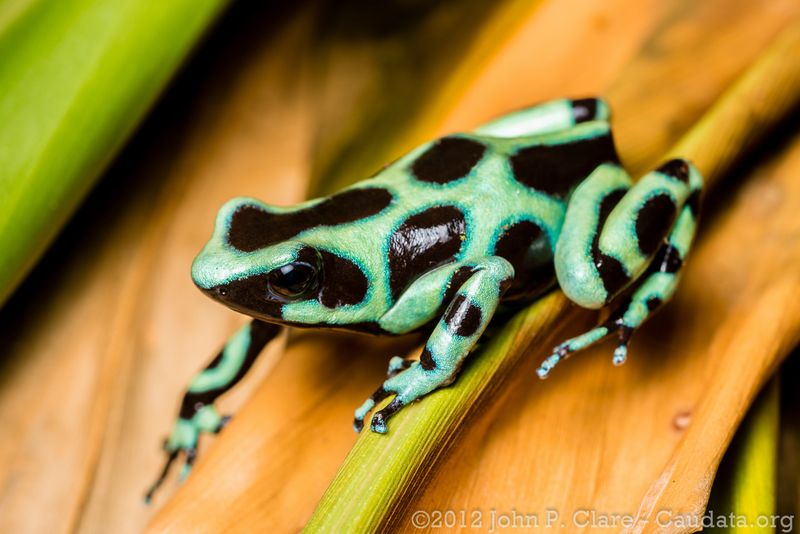
The Green and Black Poison Dart Frog boasts an alluring mix of emerald green and black, making it one of the most photographed amphibians. Native to Central and South America, its striking pattern serves as a deterrent to predators.
These frogs thrive in warm, humid environments and are often spotted in rainforests, where they can be seen hopping energetically between leaves. Their diet, rich in ants and other insects, contributes to their toxic skin, which has been studied for potential medical uses.
The vibrant colors and bold patterns of this frog continue to capture the fascination of nature enthusiasts worldwide.
6. Tiger Salamander
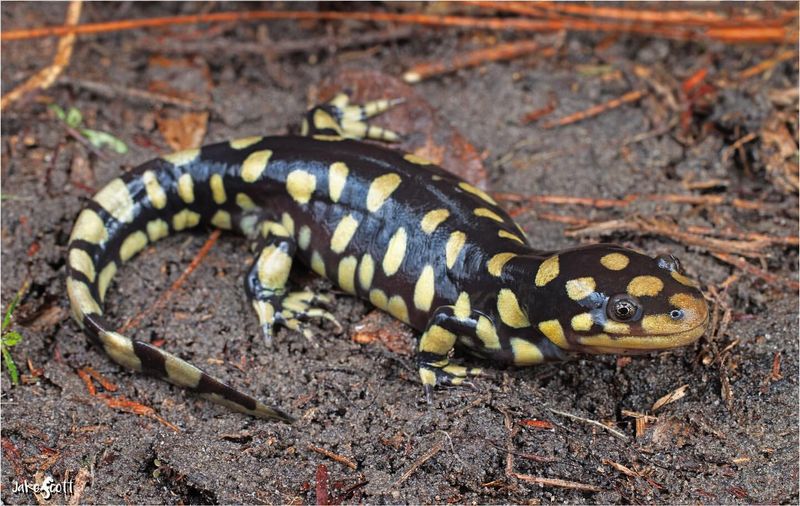
Tiger Salamanders, with their characteristic black and yellow bands, are one of North America’s most widespread salamanders. These intriguing creatures are often found in forests, grasslands, and even suburban areas, showcasing remarkable adaptability.
Their bright coloration acts as a warning, although these salamanders are not as toxic as some of their amphibian cousins. During breeding season, they migrate to ponds and wetlands, where their larvae spend the early stages of life.
Understanding their complex life cycle is crucial for conservation efforts, as habitat destruction can severely impact local populations. The Tiger Salamander’s striking appearance makes it a favorite among wildlife photographers.
7. Harlequin Poison Frog
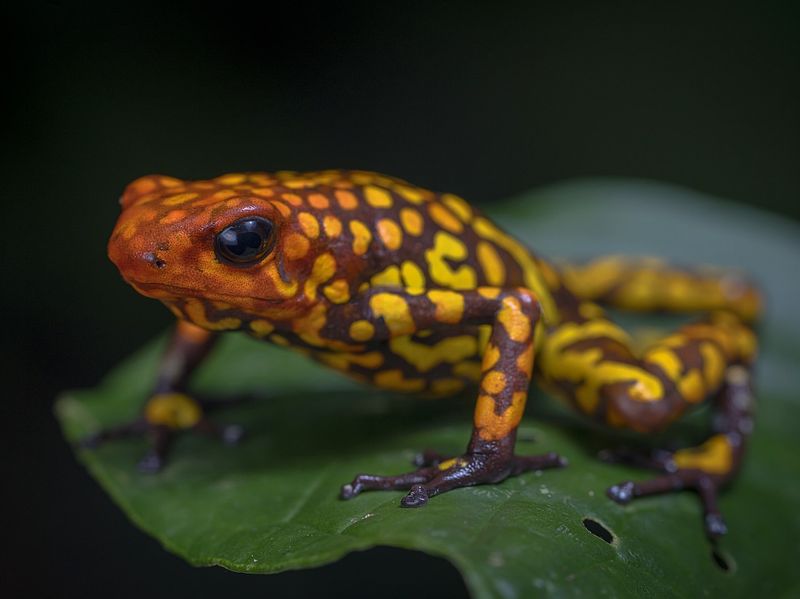
The Harlequin Poison Frog is a visual masterpiece, adorned with a complex pattern of red, black, and yellow. Found primarily in Costa Rica and Panama, its dazzling appearance is a warning of its highly toxic nature.
These frogs inhabit humid lowland forests and are often seen in close proximity to small water sources. Their vibrant patterns are not just appealing but also serve crucial ecological roles by deterring predators.
The Harlequin Poison Frog’s vivid colors and active daytime behaviors make it a popular subject for nature documentaries, reflecting its beauty and the ecological importance of its rainforest habitat.
8. Axolotl
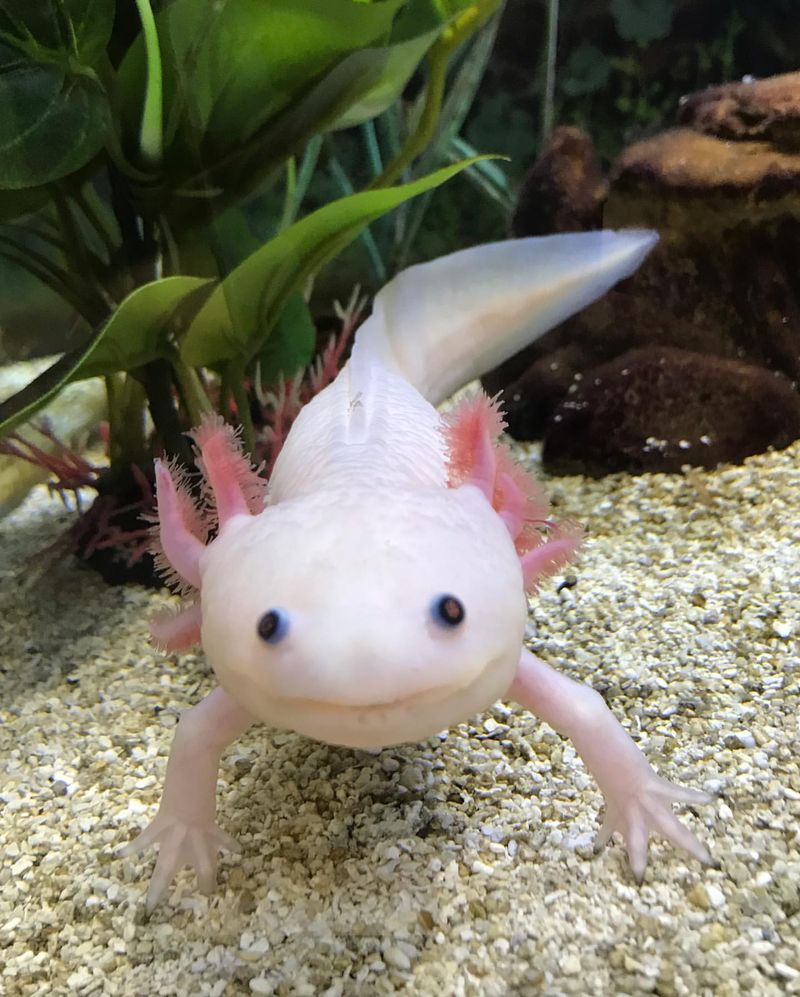
The Axolotl, often called the “Mexican walking fish,” is not a fish but a unique salamander celebrated for its regenerative abilities. Native to Mexico, these creatures are characterized by their feathery external gills and wide, expressive mouths.
Their pale pink or occasionally black coloration stands out in their natural lake habitats. Unfortunately, Axolotls are critically endangered due to urbanization and pollution. These amphibians have become symbols for scientific research in regeneration, offering hope for medical advancements.
Observing an Axolotl’s serene movements in the water is a mesmerizing experience, merging science with the wonder of nature.
9. Waxy Monkey Tree Frog
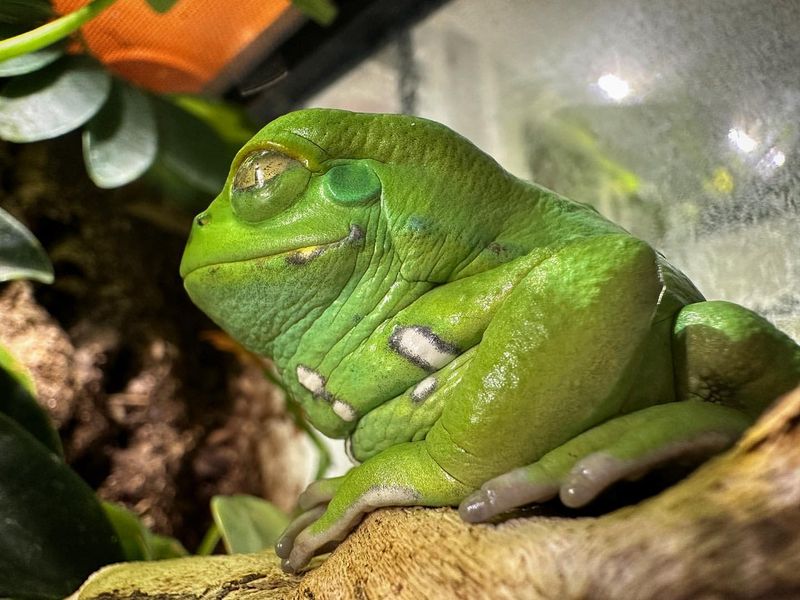
The Waxy Monkey Tree Frog, native to South America, is known for its smooth, waxy green skin. This unique adaptation helps it retain moisture, allowing it to thrive in dry, arid environments. These frogs are arboreal, spending most of their lives in trees where they hunt insects.
Their distinctive name comes from their ability to walk rather than hop, resembling a monkey’s movement more than a typical frog’s. Conservationists focus on the delicate balance of their ecosystems, as habitat changes threaten their populations.
This frog’s intriguing behavior and appearance make it a fascinating subject for both amateur and professional herpetologists.
10. Tomato Frog
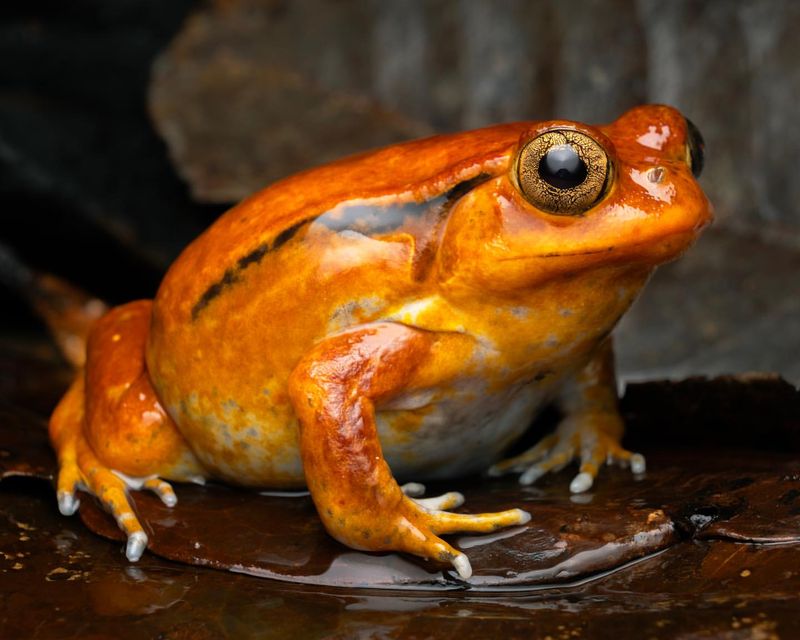
Native to Madagascar, Tomato Frogs are named for their vibrant orange-red skin, which resembles the fruit. This striking coloration acts as a defense mechanism, secreting a sticky substance when threatened, deterring predators.
These frogs are often found in leaf litter or shallow ponds, where they breed during the rainy season. Their unique defensive strategies have made them subjects of interest in studies on amphibian survival techniques.
Conservation of their natural habitats is crucial, as their populations face threats from habitat loss and pet trade. The Tomato Frog’s bold appearance and fascinating adaptations offer a glimpse into the dynamic world of amphibians.
11. Yellow-Banded Poison Dart Frog
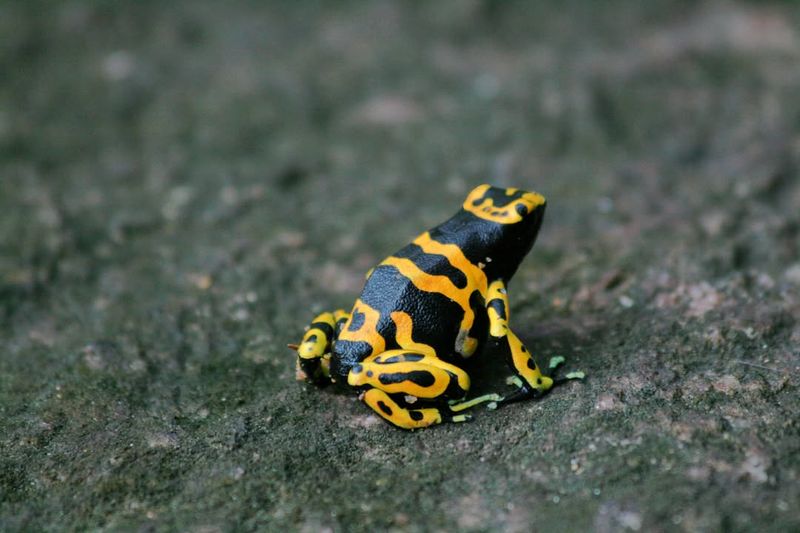
The Yellow-Banded Poison Dart Frog is a spectacle of nature with its vivid yellow bands set against a black body. These striking frogs hail from the rainforests of South America, where their coloration serves as a potent warning to predators.
Often found near streams and wet areas, they are diurnal, making their colors visible in natural light. Their diet influences their toxicity, as they consume ants and small insects.
Conservation initiatives are crucial to preserve their habitats, which are threatened by deforestation. The Yellow-Banded Poison Dart Frog is a testament to the wonders of evolutionary adaptation, captivating scientists and nature lovers alike.
12. Oriental Fire-Bellied Toad
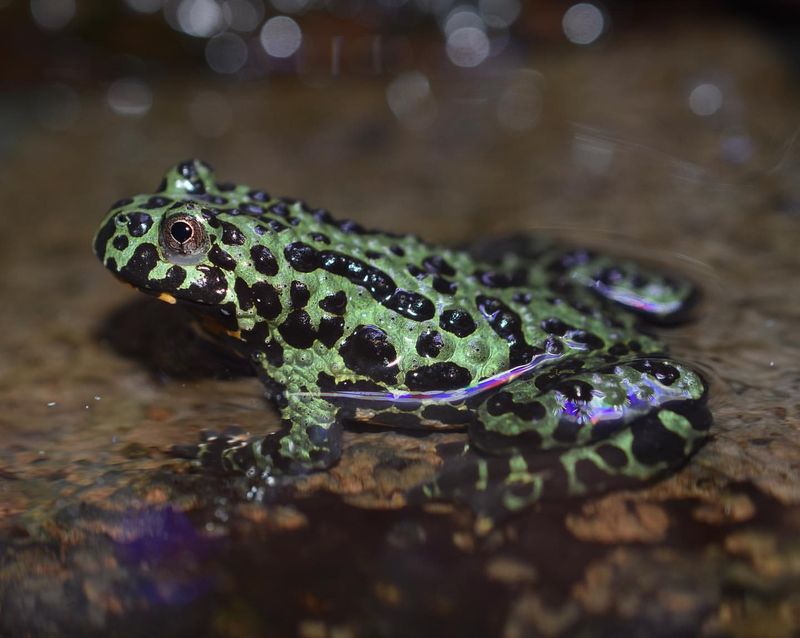
The Oriental Fire-Bellied Toad is easily recognized by its bright orange-red belly, a stark contrast to its green, warty back. Native to East Asia, this amphibian uses its vibrant underside as a warning to potential predators, a behavior known as unken reflex.
These toads are semiaquatic, often found in slow-moving streams or ponds. Their call is a gentle croak, adding to the tranquil ambiance of their habitats.
As they are popular in the pet trade, ensuring sustainable practices is vital for their populations in the wild. This toad’s distinctive appearance and behaviors make it a favorite among amphibian enthusiasts.
13. Blue-Spotted Salamander
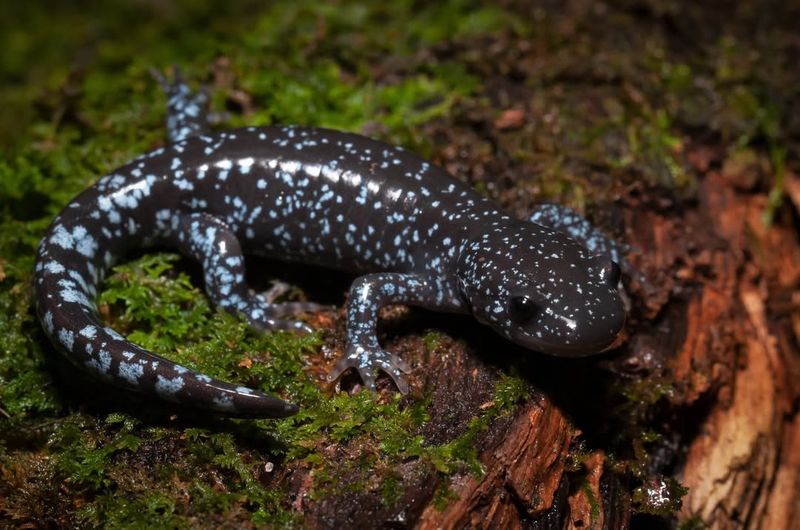
The Blue-Spotted Salamander, native to the northeastern United States and southeastern Canada, is noted for its dark body dotted with bright blue spots. This elusive salamander prefers moist, deciduous forests where it hides under logs and leaf litter.
During the breeding season, they migrate to vernal pools, making spring a crucial time for their lifecycle. Their coloration provides a measure of camouflage among the dappled light of the forest floor. Conservation efforts are necessary to maintain their habitats and study their ecological roles.
The Blue-Spotted Salamander’s subtle beauty and ecological importance make it a subject of interest for conservationists.
14. Amazon Milk Frog
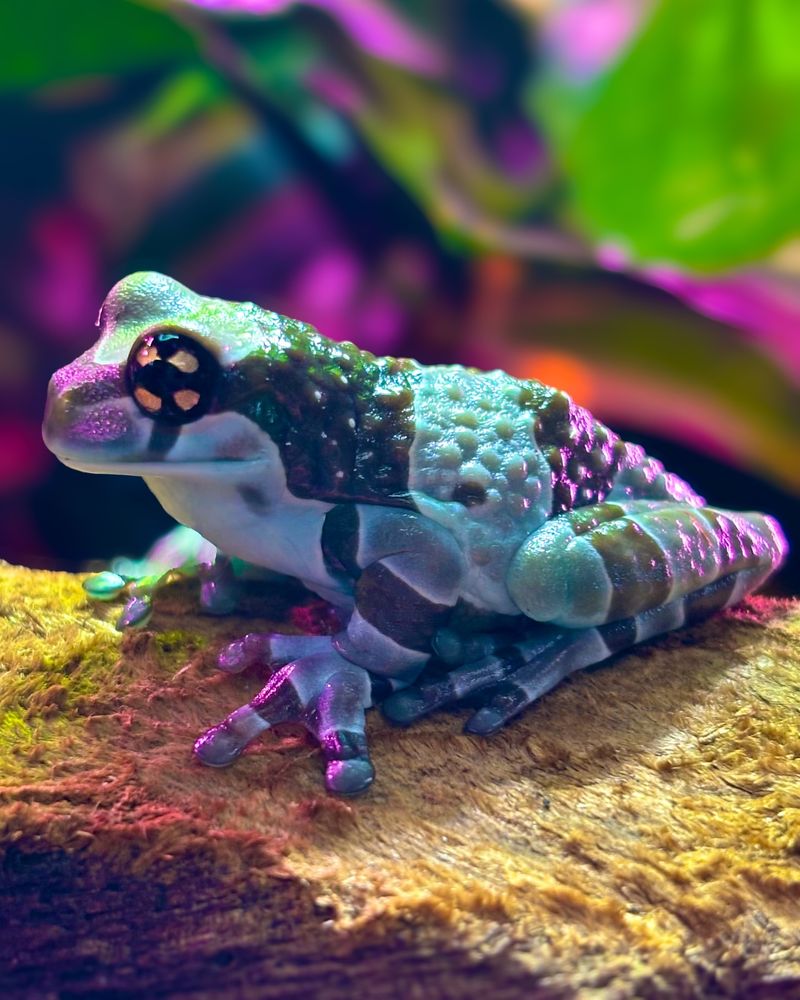
Amazon Milk Frogs, with their pale blue skin and dark brown bands, are native to the Amazon rainforest. Their name derives from the white, milky secretions they produce when threatened, serving as a defense mechanism.
These arboreal frogs are often found high in the canopy, where they inhabit tree holes filled with water. Their striking appearance and distinctive calls make them a favorite among frog enthusiasts.
Protecting their natural habitats is essential as deforestation continues to threaten their populations. The Amazon Milk Frog exemplifies the diversity and beauty found within the world’s rainforests, symbolizing the need for conservation.
15. Borneo Eared Frog
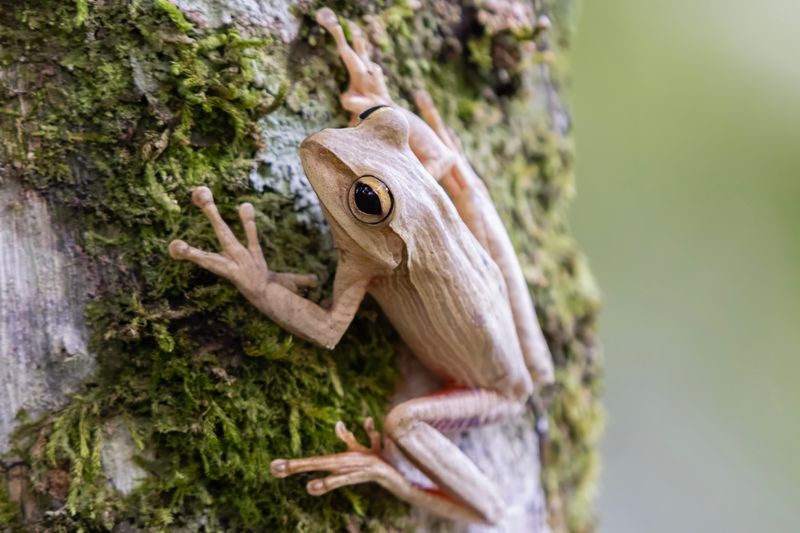
The Borneo Eared Frog, native to the rainforests of Borneo, gets its name from the prominent eardrums that are visible on the sides of its head. These frogs are masters of camouflage, with their brown and green mottled skin blending seamlessly with tree bark and leaves.
They are mostly nocturnal, coming to life at night to hunt insects. Known for their loud calls during the breeding season, these frogs add a vibrant chorus to the rainforest soundscape.
Conservation of their habitats is critical as deforestation poses a significant threat. The Borneo Eared Frog’s unique appearance and behaviors provide insights into the adaptability of rainforest species.
16. Glass Frog
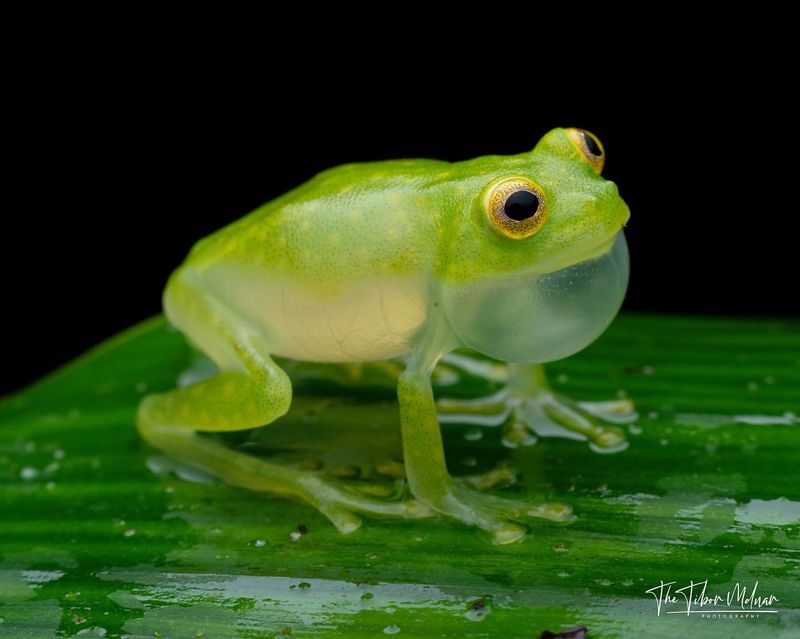
Glass Frogs are named for their translucent skin, which offers a unique view of their internal organs. Found in Central and South American rainforests, these small frogs are a testament to the wonders of natural adaptation.
They are nocturnal creatures, often seen clinging to leaves overhanging streams, where they lay their eggs. Their transparency serves as camouflage, blending them into the foliage and protecting them from predators.
The preservation of their habitats is essential as they are sensitive to environmental changes. Glass Frogs captivate scientists and nature lovers, symbolizing the delicate interplay of form and function in nature.
17. Indian Bullfrog
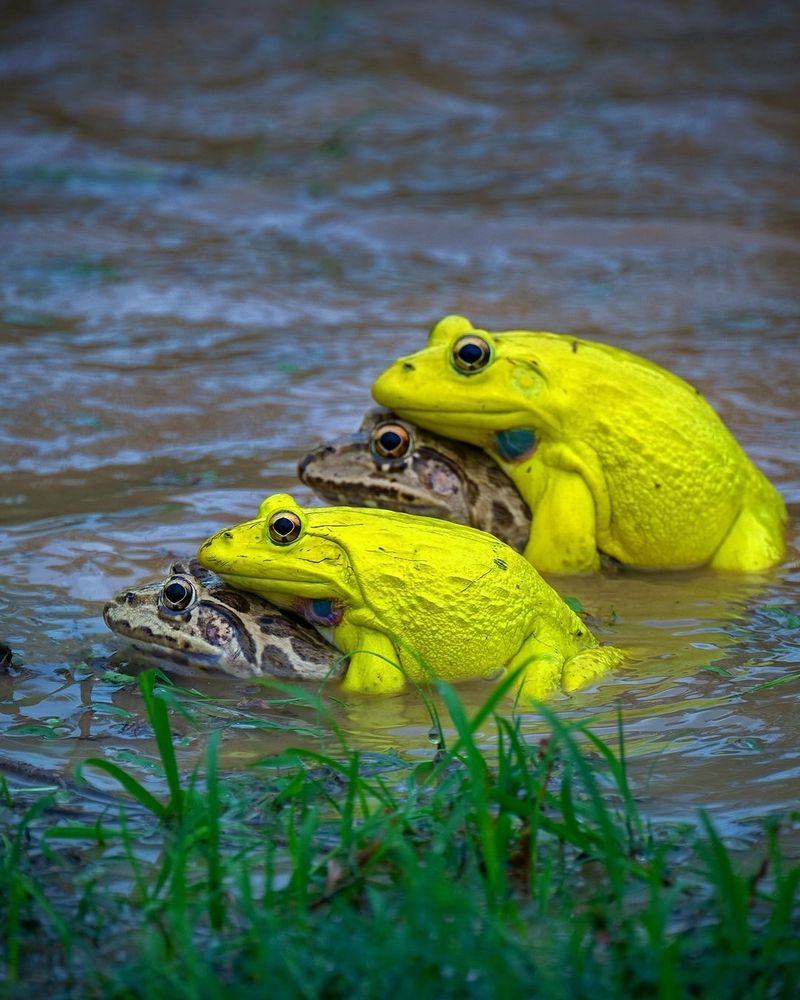
The Indian Bullfrog, also known as the “Hop Lob,” is known for its bright green body and distinctive yellow throat sac used during mating calls. Native to the Indian subcontinent, these frogs are most active during the monsoon season.
They prefer wetlands, ponds, and paddy fields, where they play a role in controlling insect populations. The loud, resonant calls of the males are a signature sound of the monsoon.
Conservationists focus on habitat preservation as urban expansion increasingly encroaches on their natural environments. The Indian Bullfrog’s vibrant presence and ecological significance highlight the need for sustainable environmental practices.
18. Purple Harlequin Toad
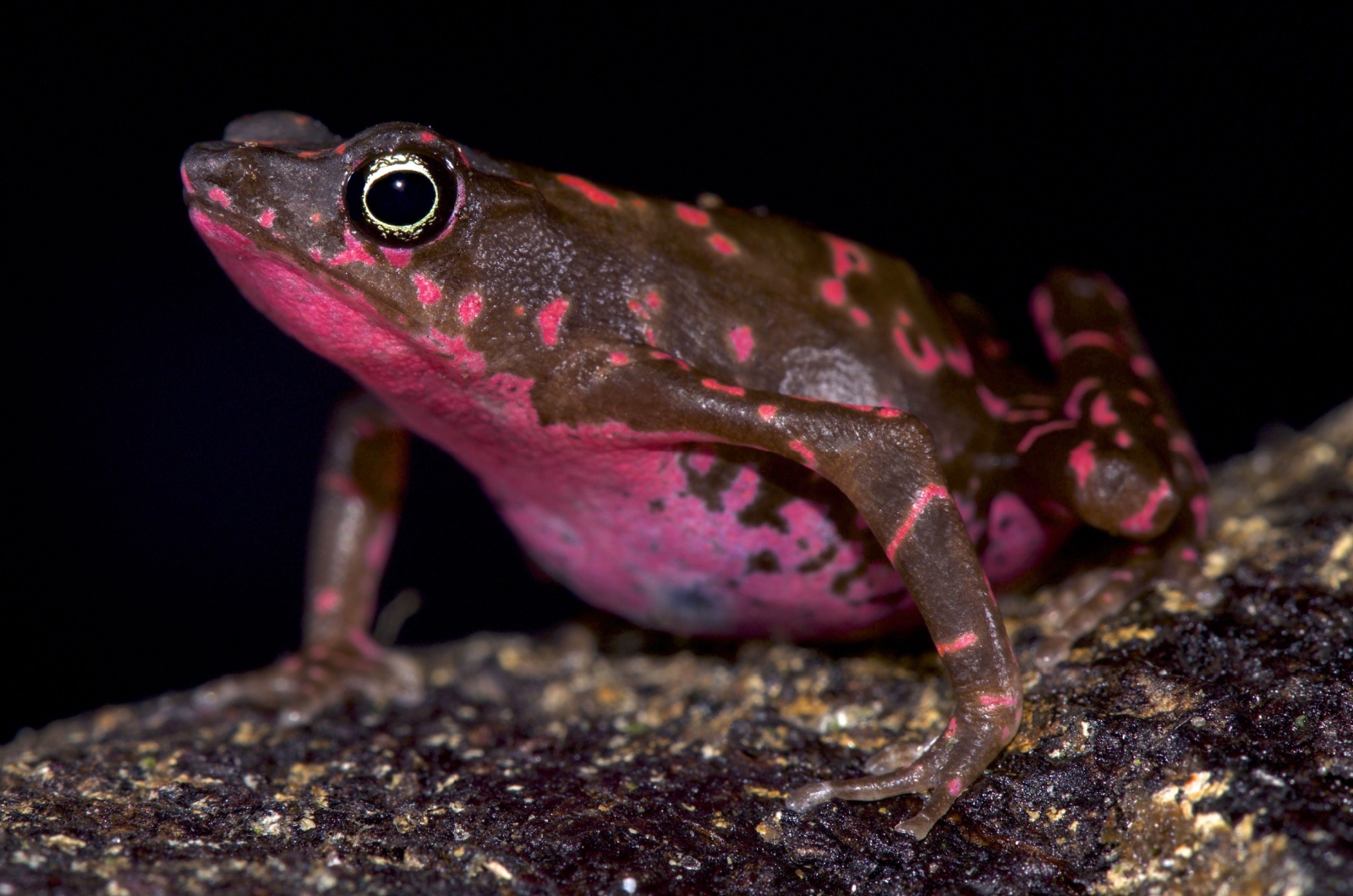
The Purple Harlequin Toad, native to the rainforests of Guyana, is an incredibly vibrant amphibian with a striking combination of purple and black markings.
This critically endangered species is not only a visual marvel but also a symbol of conservation efforts. Its vivid coloration serves as a warning to predators about its toxicity, adding to its intrigue in the wild.
19. Splendid Tree Frog
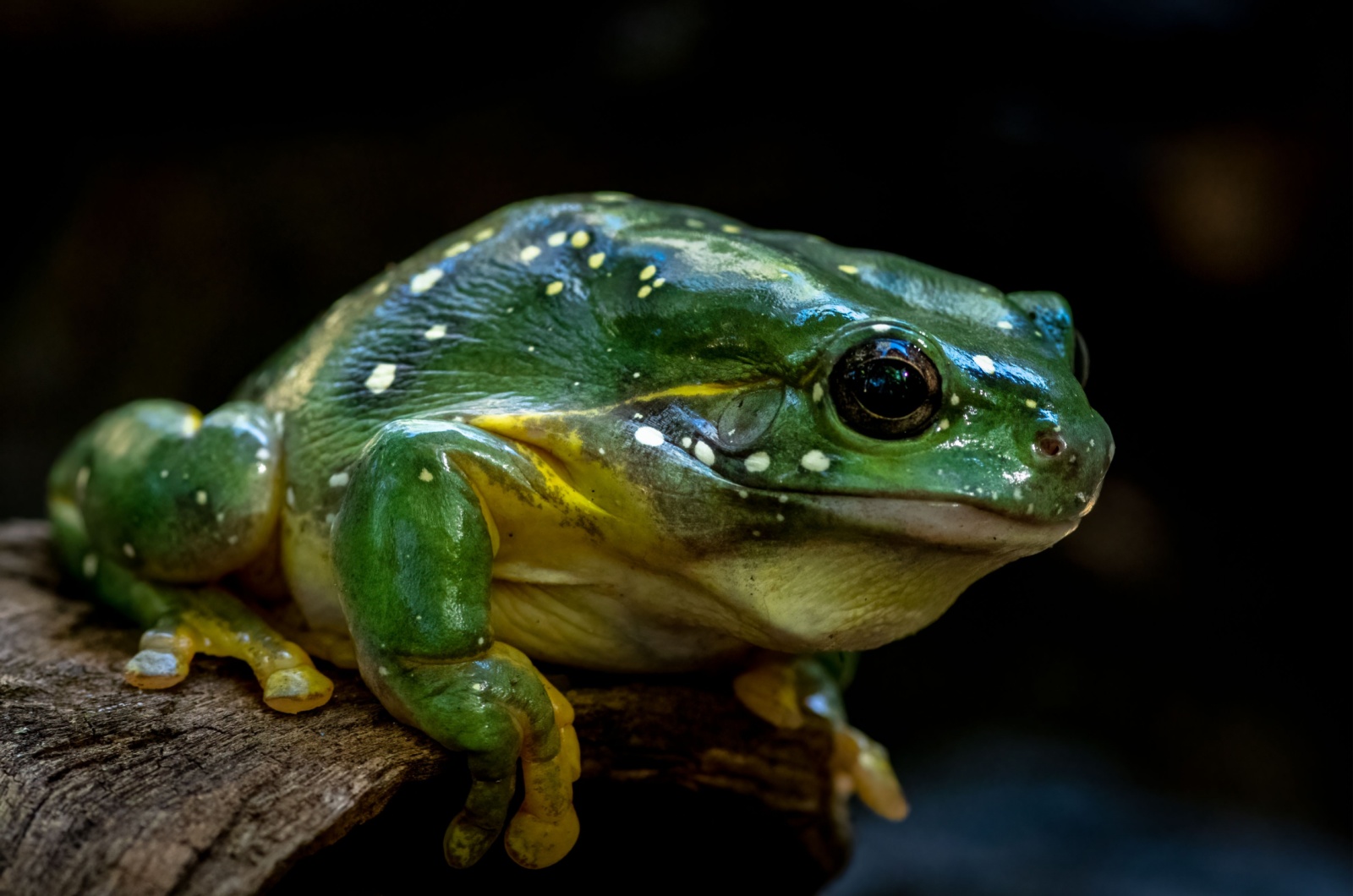
Found in northern Australia, the Splendid Tree Frog is known for its brilliant green color, often speckled with yellow or white spots. Its large, bulging eyes and unique toe pads allow it to climb and thrive in tropical habitats.
This frog’s bright coloration helps it blend into its leafy environment, making it both stunning and well-adapted to its surroundings.
20. Cuban Tree Frog
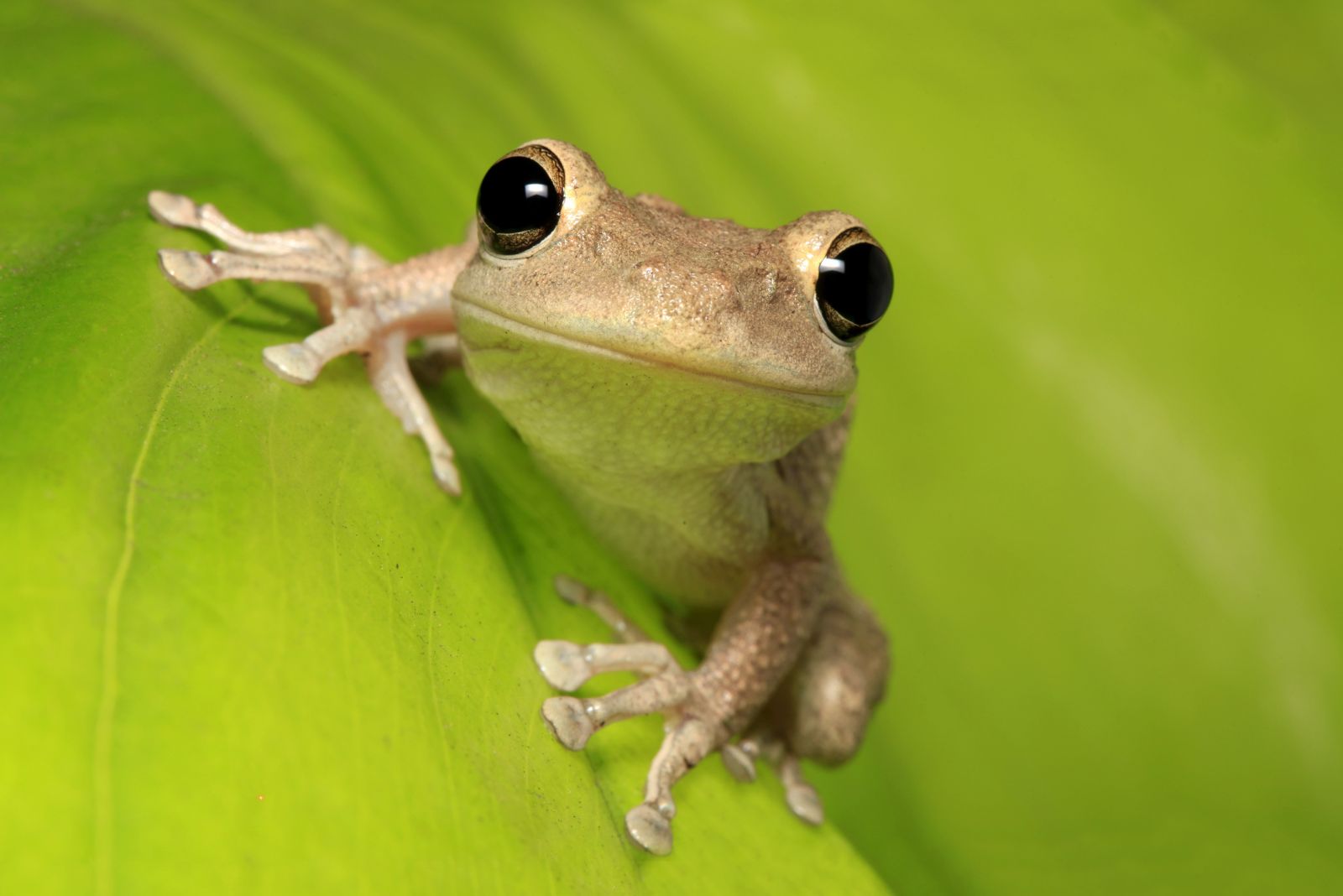
Native to the tropical landscapes of Cuba and the Florida Keys, the Cuban Tree Frog is a large, adaptable amphibian known for its olive-green or grayish body and unique ability to change its coloration.
While these frogs are excellent climbers, they tend to be nocturnal, coming out at night to hunt for insects, especially mosquitoes. With bulging eyes and suction-cup feet, they can scale vertical surfaces with ease.
Despite their beauty, Cuban Tree Frogs can become an invasive species in certain areas, like Florida, where they outcompete native frogs for food and habitat. Their adaptability and broad diet make them survivors, but also a reminder of the importance of keeping ecosystems balanced.
21. Red-Spotted Newt
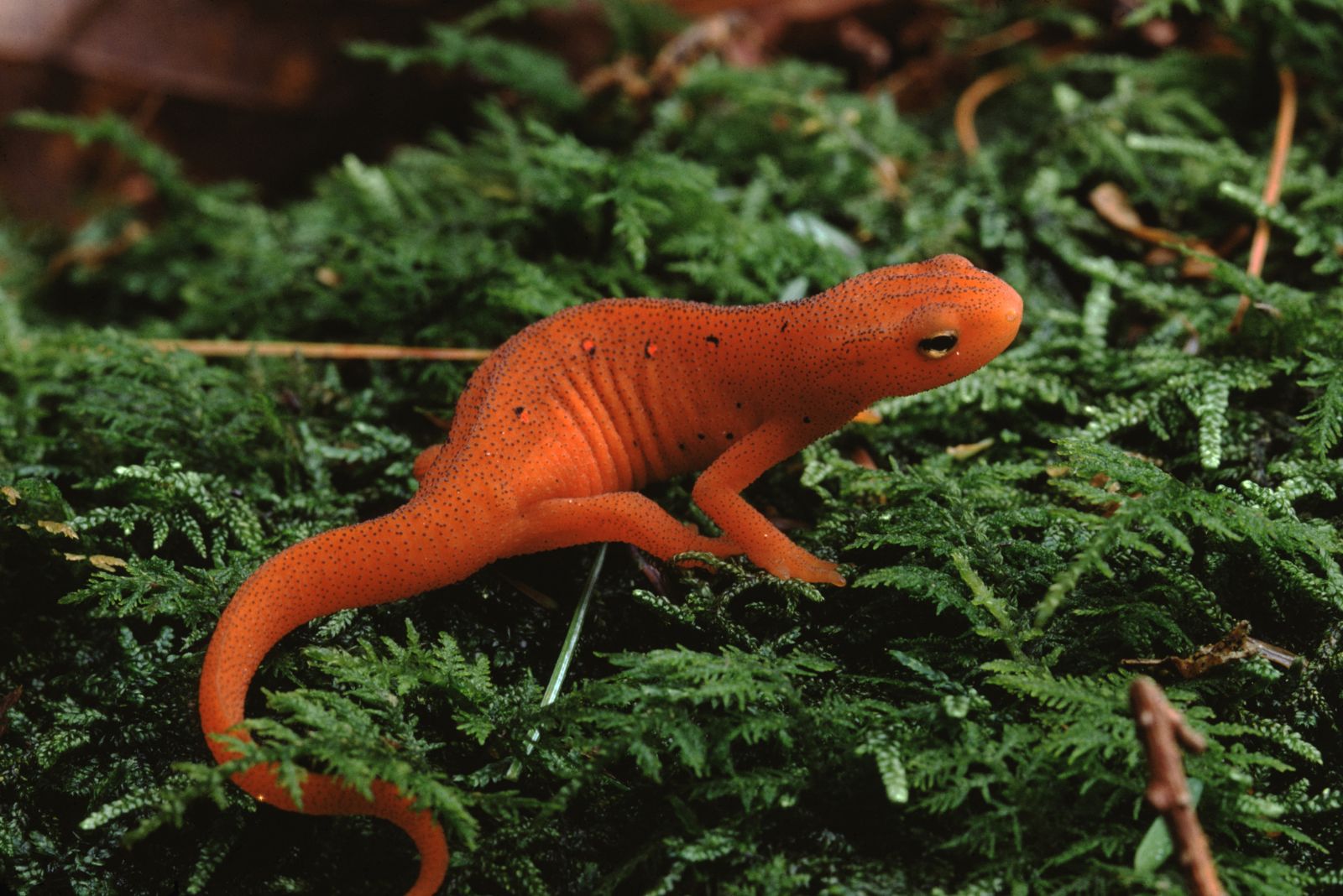
The Red-Spotted Newt, or Eastern Newt, is known for its vibrant orange-red body and distinctive black spots that give it a striking appearance.
The young newts, or red efts, live on land for several years before transitioning into their aquatic adult stage, where their skin becomes a more muted olive-green, and they spend their time in ponds or lakes.
This amphibian’s bright colors serve as a warning to predators, signaling that they are toxic and unpleasant to eat. Red-Spotted Newts play an essential role in maintaining healthy ecosystems, as they help control populations of small invertebrates. Their life cycle and unique coloration highlight the wonders of nature’s adaptive strategies.
22. Golden Poison Frog

The Golden Poison Frog is one of the most striking amphibians in the wild, known for its brilliant yellow color that serves as a warning to predators.
Native to the rainforests of western Colombia, this tiny frog packs a powerful punch with its potent toxins, which are among the most poisonous substances found in nature. The bright yellow hue is a visual cue for potential threats to steer clear, as the frog’s skin contains batrachotoxin, a deadly compound.
Interestingly, the toxicity of the Golden Poison Frog is influenced by its diet in the wild, with captive frogs being far less toxic. Despite their dangerous reputation, these frogs are a symbol of the diverse and often overlooked beauty of amphibians.
23. White’s Tree Frog

White’s Tree Frog is a large, vibrant amphibian native to Australia and New Guinea. Known for its striking green color, which can shift to a blue-gray hue in cooler conditions, this frog is often referred to as the “dumpy tree frog” due to its stout, round body.
White’s Tree Frog is famous for its calm demeanor, making it a popular pet in the exotic animal trade. It thrives in humid environments, where it often perches on tree branches and vegetation, blending seamlessly with its surroundings.
Its smooth, moist skin helps it retain water, an essential feature for survival in its tropical habitat. With its gentle nature and colorful appearance, White’s Tree Frog stands out as a peaceful yet captivating species in the amphibian world.




